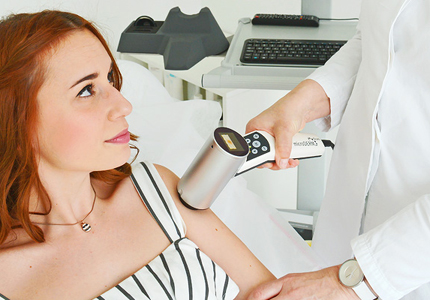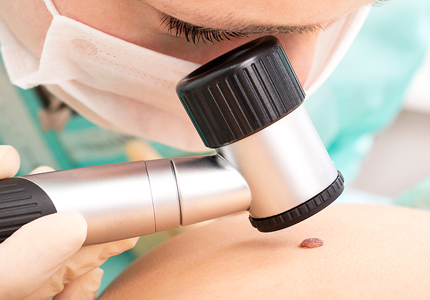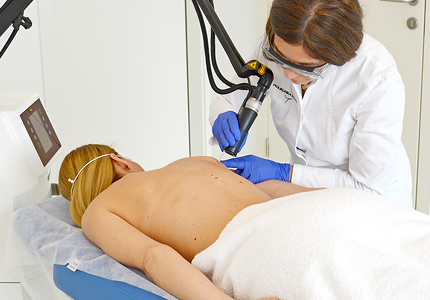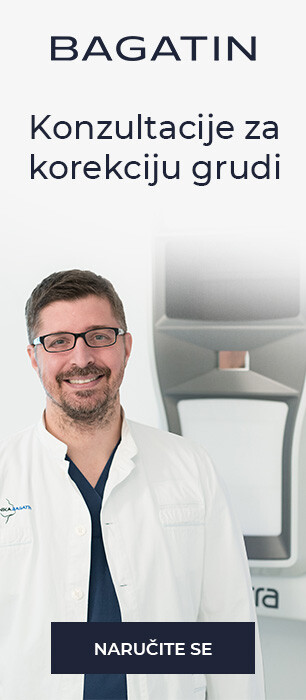Most people think of a mole as a dark brown skin change, but the appearance of moles can be varied. Moles can appear anywhere on the skin, either individually or grouped. They are usually brown in color and of different shapes. Brown color is caused by melanin, the pigment that creates special cells in the skin. Most moles appear until the age of 20, although some occur only in older age. Exposure to ultraviolet radiation increases the number of moles and encourages their tan. Other skin changes may still be warts, atheroma or lipomas.
About the procedure
Skin and subcutaneous tissue are subject to occurrence of a variety of moles of different size and characteristics throughout life. Most often these changes are benign. Treatment depends on their characteristics. Some are removed for aesthetic reasons, especially if they are on face, while others represent such a group of tumors that may require surgical removal. If a mole or other skin lesions are removed at an early stage, all cancerous cells are removed from the body and, once removed, is seldom reappears. Most moles are benign formations that do not represent any danger to health, but some still need attention. This refers to pigment changes that alter size, shape or color, that bleed, itch, become painful or occur after the age of twenty.
Alongside surgical method, there are other alternative methods of removing moles and other benign lesions in our polyclinic, such as: laser and radio frequency removal.
Laser removal is done with the help of Erbium laser, which is the simplest method for removal of moles and other skin lesions. In most cases, it does not require anesthesia. The procedure involves the use of laser light, which is directed directly to the mole in order to be heated up and then destroyed. It's painless, requires no cutting, no sutures on the skin. Also, with the laser removal of moles, it is less likely for scars to appear. After the laser treatment is complete, a scab forms on the area where there was once a mole. The scab usually holds on for about two weeks and then falls off. It is worth noting that during the laser treatment, skin is removed entirely on the microscopic level, and there is no possibility to send tissue for a pathologist for analysis for a definitive diagnosis.
Ellman radiofrequency removes changes on the skin with the help of local anesthesia, which is is injected under the lesion. Immediately after the treatment, wound appears on the place where lesion was removed which does not bleed, and it is the same size as the lump removed. A scab is formed, and after 7-10 days there is fresh layer of skin. After removing mole with method, it is possible to send sample to the PHD (histopathology) analysis where it is determined if the change is benign.
Am I a candidate?
Removing moles are advised if they were hurt by mechanical or other ways, and in those cases where a mole grows, changes in color, itches, obscures at edges, when it bleeds or when it is bigger than one centimeter. These are some of the parameters that indicate that something is happening with the mole and in this case, you should always see a doctor to make an examination. In particular, pay attention to the moles on your body that are in prominent places prone to injuries such as the creases of the body, the place where the clothes are pressed and the like.
How do you prepare?
On the day of the operation it is not permitted to use shower gels that have an oily effect on the skin, but ordinary soap or shower gel. The skin should not be moisturized. All necessary information you will be given to you during a consultation with our doctors. One week before and after the surgery avoid drugs that reduce blood viscosity (consult your general practitioner).
In Poliklinika Bagatin moles are examined by dermatoscopy. The dermatoscope is the device which, by microcameras, multiplies the specific area of human skin and allows distinction between benign and malignant lesions of the skin. Also, it helps to diagnose the type of change and determine when a particular change should be removed. In case you notice changes in moles, in terms of the appearance of asymmetry, irregularity edges, color change or an increase in the diameter of the mole, in case of bleeding or itching, be sure to consult a dermatologist for consultations. Moles examination is recommended once a year, and in people with an increased risk more often.
During the procedure
In the Poliklinika Bagatin moles and other skin lesions with different methods. During the treatment localization is very important, also bearing in mind the appearance of the patient's face after removal of skin lesions (aesthetic), as well as knowledge of the anatomical characteristics of individual regions, knowledge of different surgical techniques, etc. Some of the structures of the face as the nose, eyelids, upper and lower lips, forehead and chin seek specific treatment. It is not only localization which is important but also the other features as skin thickness, color, drawing the skin, number of hair and natural anatomical lines of the face. It is therefore very important that the surgery is performed by a qualified person because in removed skin lesions or moles scars and hyperpigmentation can appear which are difficult to be removed later.
The unwritten rule is that when you remove moles removed tissue is taken and sent for histopathological analysis to exclude any disease. The mole has to be removed entirely, which means the surface part and the part that is under the skin. When it comes to small mole the wound is stitched directly, and if a mole is larger then a local flap on the side or free skin grafts are taken and applied to the area.
Recovery time
Postoperative treatment after the procedure takes about seven days, and the first days after the removal of moles it is obligatory to change bandages on the areas moles had been removed from. After removing the sutures treated places are anointed by the prescribed creams for the next few weeks in order to soften the scar. In the postoperative period the patient should not be exposed to sunlight or irritating agents.
Precautions
It is important to comply with all medical instructions given to you, and they relate to everyday routine under sterile conditions and also avoid major pysical exertion, especially before remove the stitches for the wound to heal better, so the scar is less pronounced. To ease the removal, it is important to start with using a dermocosmetic preparations designed for this purpose. They are also available in our clinic.
Price
The price of removing scars and tattoos in the Poliklinika Bagatin includes surgery, local anesthesia, postoperative control, removing stitches and set for home changing.
Similar services
People who have visited this page have also shown interest in these services:
Free online consultation with our doctors
Send enquiryFeel free to contact us
By phone on +385 1 46 10 225 or through our online contact form
Send enquiry
Locations
| Green Gold Tower Ul. Grada Vukovara 269a/10, 10000 Zagreb |
|
| Donji grad Frana Folnegovića 1c/1, 10000 Zagreb |
|
| Dioklecijan Hotel & Residence Kranjčevićeva 45/1, 21000 Split |
Where to park
| Parking available in Green Gold centre, Zagreb underground garage. For detailed information download a map |



